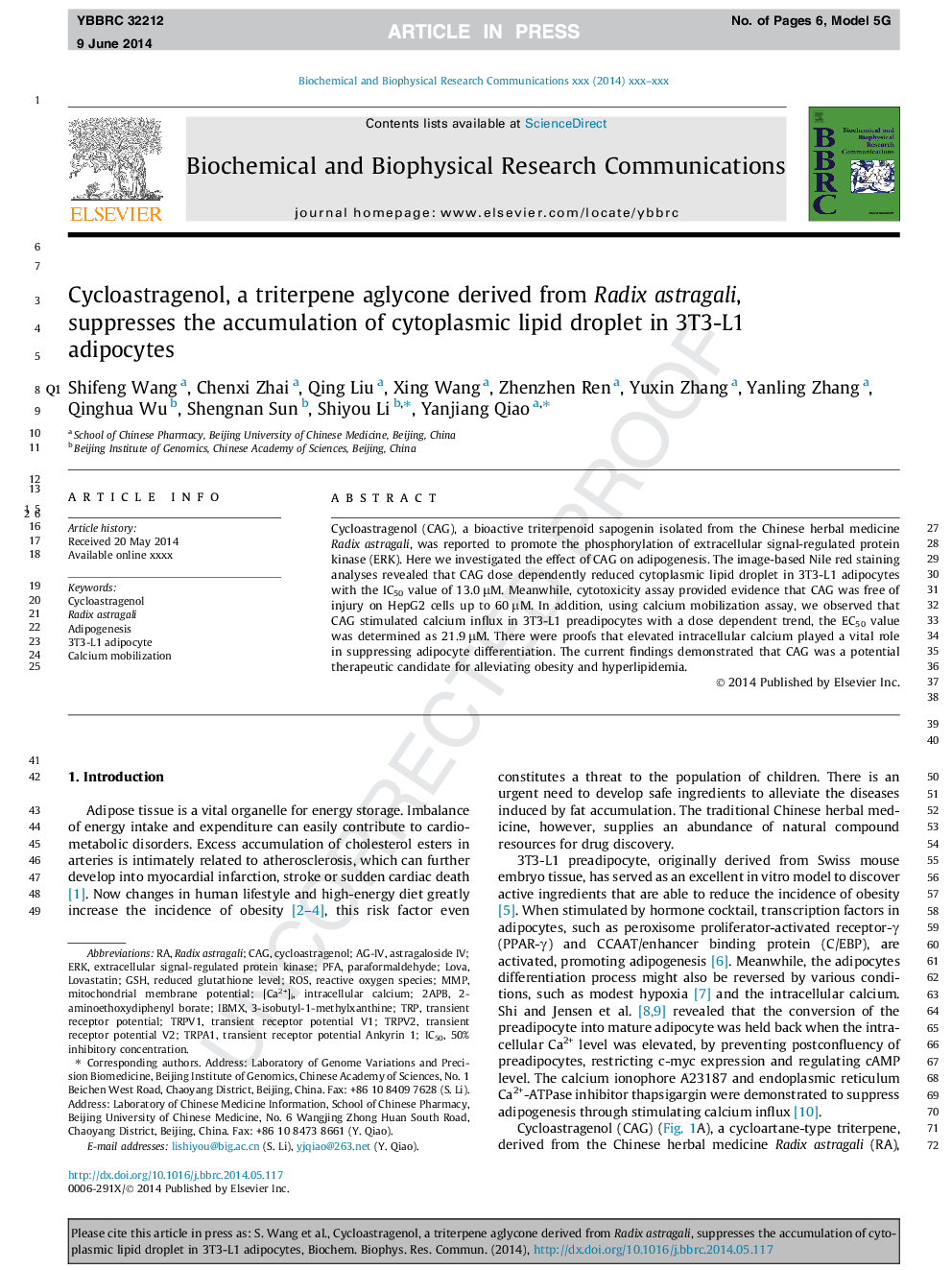| Article ID | Journal | Published Year | Pages | File Type |
|---|---|---|---|---|
| 10754850 | Biochemical and Biophysical Research Communications | 2014 | 6 Pages |
Abstract
Cycloastragenol (CAG), a bioactive triterpenoid sapogenin isolated from the Chinese herbal medicine Radix astragali, was reported to promote the phosphorylation of extracellular signal-regulated protein kinase (ERK). Here we investigated the effect of CAG on adipogenesis. The image-based Nile red staining analyses revealed that CAG dose dependently reduced cytoplasmic lipid droplet in 3T3-L1 adipocytes with the IC50 value of 13.0 μM. Meanwhile, cytotoxicity assay provided evidence that CAG was free of injury on HepG2 cells up to 60 μM. In addition, using calcium mobilization assay, we observed that CAG stimulated calcium influx in 3T3-L1 preadipocytes with a dose dependent trend, the EC50 value was determined as 21.9 μM. There were proofs that elevated intracellular calcium played a vital role in suppressing adipocyte differentiation. The current findings demonstrated that CAG was a potential therapeutic candidate for alleviating obesity and hyperlipidemia.
Keywords
2-aminoethoxydiphenyl borateRadix astragaliPFA2APBTRPV2ERKCAGGSHCycloastragenolIC50Transient receptor potential V1TrpTRPV1TRPA1IBMXMMP3-isobutyl-1-methylxanthine50% inhibitory concentration3T3-L1 adipocyteROS[Ca2+]iAdipogenesisAstragaloside IVCalcium mobilizationLOVALovastatinparaformaldehydeMitochondrial membrane potentialtransient receptor potentialtransient receptor potential ankyrin 1Extracellular signal-regulated protein kinaseIntracellular calciumReactive oxygen species
Related Topics
Life Sciences
Biochemistry, Genetics and Molecular Biology
Biochemistry
Authors
Shifeng Wang, Chenxi Zhai, Qing Liu, Xing Wang, Zhenzhen Ren, Yuxin Zhang, Yanling Zhang, Qinghua Wu, Shengnan Sun, Shiyou Li, Yanjiang Qiao,
